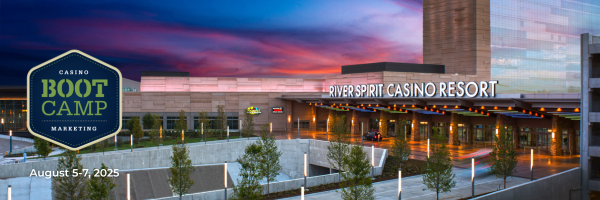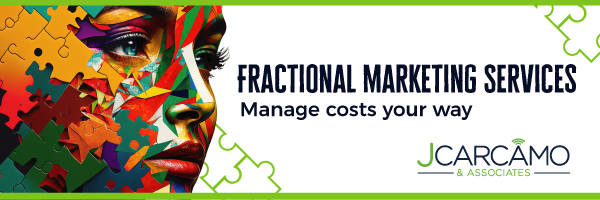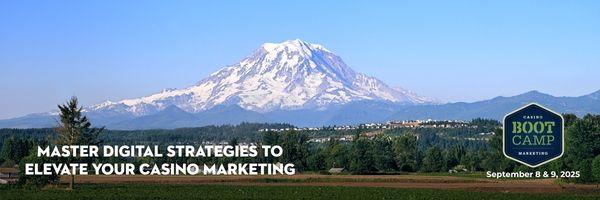Your slot attendant posted an Instagram story of tonight’s jackpot winner—complete with confetti, authentic excitement, and 847 views in two hours. Meanwhile, your official casino account’s similar post from last week got 23 likes and crickets.
Here’s the thing: your employees are already your best content creators. The question isn’t whether they should represent your brand on social media—they already are. The question is whether you give them the tools to do it brilliantly.
Why Your Brand Standards Need a Social Media Makeover
Traditional brand guidelines weren’t built for the social media world. They cover logo placement and color codes, but what happens when your bartender wants to share a behind-the-scenes video? Or when your host must respond to a guest complaint in the comments?
Social media demands real-time decisions, platform-specific nuances, and authentic human connection—all while maintaining brand consistency. Without dedicated casino social media guidelines, even your most well-intentioned team members can create content that feels off-brand or (worse) creates unnecessary risk.
Just look at how major brands handle this challenge: Wendy’s legendary social media presence maintains perfect brand consistency while allowing their team to react quickly to trends. HubSpot tailors content for each platform—more playful on TikTok and professional on LinkedIn—yet their core voice remains instantly recognizable.
The gap between traditional brand standards and social reality shows up in:
- Platform Variations: Your LinkedIn voice should differ from your TikTok presence, but both need to feel authentically “you”.
- Visual Consistency: Instagram Stories need different treatment than Facebook posts, yet both should be immediately recognizable as your brand.
- Interaction Standards: How do you handle complaints, celebrate wins, or engage with local community posts while staying on-brand?
- Content Boundaries: What topics (and images) are encouraged, acceptable, or completely off-limits for team members posting on behalf of the casino?
Building Your Social Media Brand Guide: The Framework
Think of this as your casino’s social media brand guide as brand standards guide’s social-savvy sibling—practical, platform-aware, and designed for non-marketers to use. The best social media brand guides work in layers, starting with foundational elements that never change, then building up to flexible guidelines that can adapt to trends, platforms, and real-time situations.
The key is creating something comprehensive enough to provide clear direction, yet simple enough that your night-shift supervisor can reference it quickly when they want to share a guest success story at 11 PM on a Saturday.
Layer One: Your Brand Foundation
The foundation of your standards is where you establish the non-negotiables—the core elements that make your content unmistakably yours, regardless of who’s posting or which platform they’re using.
Voice and Tone by Platform: Your brand personality should remain consistent, but how you express it can vary dramatically by platform. Think of it like wearing the same confident, welcoming personality to a backyard barbecue versus a business dinner—you’re still you, but you adjust your approach to fit the setting.
- Instagram: Warm, celebratory, behind-the-scenes authentic (“Check out Maria’s incredible customer service skills! 🌟”)
- Facebook: Informative, community-focused, conversational (“Tonight’s trivia night was incredible—thanks to everyone who joined us!”)
- LinkedIn: Professional, industry-focused, thought leadership (“Our team development program continues to set the standard for hospitality excellence”)
This adaptation mirrors how successful brands like Spotify maintain their music-centered, energetic personality while adapting their voice for different platforms and audiences.
Visual Identity Standards: Consistency here doesn’t mean every post looks identical—it means every post looks like it belongs to the same family. Your visual standards should be clear enough that someone scrolling quickly through their feed can spot your content without even reading the caption.
- Photo guidelines: lighting, framing, and composition basics
- Brand overlay templates for Stories and posts
- Approved filters and editing approaches
- Logo usage for different post types and platforms
Leading companies like Netflix balance visual consistency with platform-specific adaptations, using everything from teaser trailers to behind-the-scenes content while maintaining their recognizable brand presence.
Content Categories and Themes: This is your content traffic light system—giving your team clear guidance on what’s always okay, what needs a quick check, and what’s completely off-limits. When team members know these boundaries, they can create content confidently without constantly seeking approval.
- Green Light: Team spotlights, guest celebrations, community involvement, behind-the-scenes moments, food and beverage features
- Yellow Light (Check First): Promotional content, event coverage, guest-generated content
- Red Light: Anything involving disputes, medical emergencies, security issues, or personal opinions on controversial topics
Layer Two: The Tactical Playbook
This layer gets into the nuts and bolts—the specific tools and protocols that help your team execute consistently and handle the unexpected situations that social media inevitably brings.
Hashtag Strategy: A well-planned hashtag strategy does double duty: it helps discover your content while reinforcing your brand positioning. Think of hashtags as your content’s filing system and marketing team rolled into one.
- Core brand tags: #YourCasinoName #TeamSpotlight #LocalGaming
- Campaign-specific tags: #SummerJackpots #TriviaNight #EmployeeAppreciation
- Community tags: #LocalCityName #SupportLocal #Hospitality
Response and Interaction Guidelines: Social media is inherently social, which means your team will need to engage in conversations, respond to comments, and handle everything from compliments to complaints. Standard approaches for common scenarios help maintain consistency while allowing for authentic, human responses.
- Standard responses for common scenarios
- Outline of the type of scenarios that might need escalation
- Escalation procedures for complaints or sensitive situations
- Tone examples for different kinds of interactions
- When to tag official accounts or managers
Companies like Legal & General specify how team members should respond to LinkedIn comments, ensuring every interaction reinforces their position as trustworthy thought leaders.
Crisis Communication Basics: Situations can escalate quickly, and social media moves faster than you think. A clear protocol for potential crises protects your brand and team members from making decisions they’re not equipped to handle. Your standards should address the following.
- What constitutes a crisis on social media?
- Who to contact immediately, and
- Standard holding responses while issues are being examined or resolved
Empowering Your In-House Influencers: From Nervous to Natural
Here’s the beautiful irony of employee-generated content for casinos: your most effective brand ambassadors are often the people who are most nervous about “getting it wrong.” Your host, who connects effortlessly with guests face-to-face, suddenly freezes when posting a simple Instagram story. Your bartender, who can read a room perfectly, worries about choosing the proper caption.
The solution isn’t more rules; instead, it’s better support. Your in-house influencers need tools that build confidence, not documents that create anxiety. They need to feel equipped, not policed. When you get this balance right, you will see team members previously hesitant about social media become some of your most authentic and effective content creators.
The key is meeting them where they are. Your dealer doesn’t need to become a social media strategist. They must feel confident sharing the authentic moments that make your casino special.
The Confidence-Building Toolkit
Consider this as social media training wheels that gradually build skills and comfort without overwhelming your team. The best creator support systems work in progressive layers, starting with the absolute basics and building up to more sophisticated content creation.
The One-Page Wonder: This isn’t a comprehensive guide. It should be a confidence booster that fits on a single sheet and answers the most common questions before they’re even asked. Keep one posted in break rooms, add it to new employee onboarding, and make it accessible on phones.
- Three go-to content ideas for slow days (guest spotlight, behind-the-scenes moment, team appreciation)
- Basic photo composition tips with visual examples (rule of thirds, find the best lighting spots in your casino)
- Five caption templates they can customize: “Meet [Name], who’s been making guests smile for [period of time]…” / “Tonight’s energy is incredible thanks to…” / “Behind the scenes of what makes [event/service] special…”
- Emergency contact for questions (and reassurance that asking is always better than guessing)
Practical Tools That Remove Barriers: The goal here is to eliminate the technical obstacles derailing good intentions. Many great content ideas die because someone doesn’t know how to get good lighting or feels intimidated by editing apps.
- Branded phone grips or stands for stable, professional-looking videos
- Pre-designed Story templates with your brand colors and fonts that they can customize with text and photos
- Curated list of royalty-free music options for videos (with easy access links)
- Quick video editing app recommendations with specific tutorial links for casino-relevant content
Micro-Learning Opportunities: Long training sessions don’t work for busy casino teams, but bite-sized skill-building does. These short, focused sessions build competence without disrupting operations.
- 15-minute “Social Media Confidence” workshops during shift changes
- Practice posting sessions in private team groups before going live
- Monthly “content spotlight” meetings where team members share what worked and learn from each other
- Regular check-ins that celebrate great content and provide gentle, specific guidance for improvement
Building a Culture of Authentic Storytelling
The most successful in-house influencer programs don’t just teach posting techniques. They help team members recognize and share the stories already happening around them daily. Your goal is to help them see their work through the lens of authentic storytelling.
Part of this process is shifting the conversation from “what should I post?” to “what amazing thing just happened that our community would love to know about?” When team members think like storytellers rather than social media managers, the content becomes infinitely more engaging and authentic.
Story Recognition Training: Help your team identify the moments worth sharing:
- Guest success stories and celebrations
- Behind-the-scenes teamwork and problem-solving
- Community connections and local partnerships
- Personal growth and professional development moments
- Seasonal traditions and special events
Authenticity Over Perfection: The best employee-generated content feels real because it is real. Train your team to prioritize genuine moments over polished productions. A slightly shaky video of genuine excitement over a jackpot winner will consistently outperform a perfectly staged photo that lacks emotional connection.
Measuring Success: Beyond Vanity Metrics to Real Impact
Many regional casino marketing strategies fall apart because they measure the wrong things. Likes and shares are nice, but they don’t tell you whether your social media efforts are actually working or if they are supporting your brand and standards. For casino marketing teams with limited resources, you need metrics directly connecting to business outcomes and team development.
Effective measurement of social media brand standards requires looking at three distinct areas: brand consistency, team engagement, and business impact. Each area tells you something different about how well your guidelines work and where you might need to adjust your approach.
Brand Consistency Metrics: Are You Recognizably You?
Establishing agreed-upon metrics will indicate whether your brand standards are creating the consistency you’re aiming for. These metrics help you identify gaps in your guidelines or areas where additional training might be needed.
Visual Brand Recognition: Can someone scrolling through their feed immediately identify your content as yours, even without seeing your logo or account name? Track this through:
- Consistency in visual elements across all team-generated content
- Adherence to brand color schemes and visual templates
- Appropriate logo usage and brand overlay implementation
- Platform-appropriate visual adaptations that still feel cohesively branded
Remember, this isn’t about everything looking the same. It’s about creating a consistent look for your brand.
Voice and Tone Consistency: Does all your content sound like it’s coming from the same brand, regardless of who’s posting? Monitor this through:
- Consistent use of brand-appropriate language and terminology
- Platform-specific voice adaptations that maintain core brand personality
- Appropriate response tones in comments and interactions
- Alignment between employee posts and official brand communications
Content Category Adherence: Are team members staying within the guidelines while creating diverse, engaging content? Evaluate:
- Distribution of “green light” content across approved categories
- Minimal need for post corrections or removals
- Proactive consultation on “yellow light” content categories
- Zero incidents in “red light” content areas
Team Engagement and Confidence Metrics: Is Your Team Thriving?
These metrics help you understand whether your social media brand standards are empowering your team or creating barriers to participation. High-performing social media brand standards should increase both participation and confidence over time.
Participation Growth: Track not just who’s posting, but how their engagement evolves:
- Number of team members actively creating content month-over-month
- Frequency of posts per active team member
- Diversity of departments represented in social content
- Retention of team members in the social media program over time
Confidence Indicators: Look for signs that your team is becoming more comfortable and creative within your guidelines:
- Decreased questions about whether content is “appropriate”
- Increased experimentation with different content types within approved categories
- Team members are helping train new colleagues on social media guidelines
- Proactive suggestions for new content ideas or campaign participation
Quality Evolution: Monitor how the sophistication and effectiveness of content improve as team members become more comfortable:
- Improvement in photo composition and video quality over time
- More strategic use of hashtags and platform-specific features
- Better storytelling and caption writing
- Increased authentic engagement from guests and community members
Business Impact Metrics: What’s the Real ROI?
Ultimately, your social media brand standards should contribute to measurable business outcomes. These metrics help you demonstrate the value of your investment in social media guidelines and team training.
Community Engagement and Reputation: Social media brand standards should enhance your casino’s reputation and community connections:
- Increased authentic engagement rates on team-generated content versus official posts
- Growth in positive brand mentions and guest-generated content
- Enhanced community perception through authentic employee storytelling
- Stronger connections with local businesses and community organizations
Employee Pride and Retention: Well-executed social media brand standards often have unexpected benefits for internal culture:
- Increased employee satisfaction scores related to brand representation
- Higher participation in other company initiatives and programs
- Improved employee retention rates among social media participants
- Enhanced recruitment effectiveness through authentic workplace culture content
Operational Efficiency: Good brand standards should make social media management easier, not harder:
- Reduced time spent on content approval and revision processes
- Fewer brand-related incidents requiring crisis management
- Increased speed from content creation to publication
- Better integration between social media efforts and broader marketing campaigns
Guest Experience Enhancement: The ultimate goal is to create better experiences for your guests:
- Increased guest engagement with your casino’s social media presence
- More guest-generated content and authentic testimonials
- Enhanced guest loyalty through personal connections with team members
- Measurable impact on guest satisfaction scores and return visits
Making It Feel Like Partnership, Not Policing
The best social media brand standards don’t restrict creativity—they amplify it. When your team knows the boundaries, they can play confidently within them. When they have templates and guidelines, they can focus on storytelling instead of wondering if they are doing it right.”
Research from leading brand strategists shows that strong guidelines don’t stifle creativity—they provide a framework that empowers in-house creators to be both innovative and on-brand. Companies with clear social media brand standards see faster content creation, more consistent engagement, and significantly reduced brand risk.
Your goal isn’t to control every post but to ensure that every post feels authentically, recognizably yours while celebrating the unique perspectives your team brings.
The Transformation That’s Happening
Picture this scenario six months from now: Your slot supervisor posts an Instagram story about a guest’s jackpot win, complete with authentic excitement and perfect brand voice. Your bartender shares a behind-the-scenes video of preparing for a busy weekend, showcasing your team’s professionalism and energy. Your host writes a LinkedIn post about exceptional customer service that gets shared by industry peers.
This content feels unmistakably yours—cohesive, professional, and engaging—yet each piece reflects the authentic personality of the team member who created it. More importantly, it’s evolving naturally, without constant oversight or approval processes, because your team has the confidence and tools they need to represent your brand brilliantly.
This isn’t wishful thinking. It happens when casino teams have clear, empowering social media brand standards.
Here’s your choice: You can continue with the current approach, hoping your brand stays consistent while missing countless opportunities for authentic connection, or you can equip your team to become your most powerful marketing asset.
Every day you wait, your competitors are getting closer to figuring this out. Every authentic moment your team could share but doesn’t is an opportunity for another casino to build the community connections and employee pride that drive long-term success. Employee-generated content isn’t a nice-to-have in an industry where guest experience and team culture directly impact your bottom line. It’s a competitive advantage you can’t afford to ignore.
The thriving casinos don’t necessarily have the biggest marketing budgets. They are the ones whose teams feel empowered to share their authentic stories, whose brand feels alive and connected to their community, and whose employees have become genuine advocates rather than just staff members.
Your team is already telling stories about your casino—in the break room, at home, in their communities. Social media brand standards don’t tell these stories; they just ensure the best ones reach the people who matter most: your guests, community, and future team members.
Ready to Empower Your Team?
Let’s create a custom social media brand guide for your casino. We’ll translate your brand into tools your team can use confidently—from one-pagers to hands-on training. Let’s schedule a consultation to explore your specific needs and goals. Custom strategies for regional casinos are our specialty.
Key Takeaways
- Your team already represents your brand on social media. Give them the tools to do it brilliantly.
- Traditional brand standards don’t translate well to real-time, platform-specific social content.
- A strong social media brand guide includes voice, visuals, content boundaries, hashtags, and response templates.
- Employee-generated content is a significant asset. When your team feels confident and supported, they’ll create authentic, on-brand moments.
- Measurement isn’t about likes but consistency, engagement, and business impact.
- Done right, brand standards don’t limit creativity. They unlock it.
FAQs
Q: Who should your social media brand standards be written for? A: Anyone who might post on behalf of the brand—this includes marketing team members, hosts, supervisors, and even GMs who occasionally go live. The guide should be clear enough for non-marketers to use with confidence.
Q: What’s the difference between a traditional brand guide and a social media brand guide? A: A traditional brand guide focuses on logos, fonts, and messaging. A social media guide adds platform-specific rules, tone variations, visual templates, and real-time response protocols to help teams post quickly without compromising consistency.
Q: Do I need one guide for staff and another for influencers or creators? A: Not necessarily. A well-structured guide can include a staff-facing quick-start section and additional best practices for more advanced users (like in-house influencers).
Q: What if our team is nervous about posting? A: That’s normal. A good brand guide paired with training, tools, and micro-learning builds confidence over time. Start with a “one-sheet” and grow from there.
Q: How do I measure if my brand standards are working? A: Look for improvements in consistency, team participation, quality of content, and time saved on revisions. When brand risk decreases and creative output increases, you’re doing it right.





Recent Comments